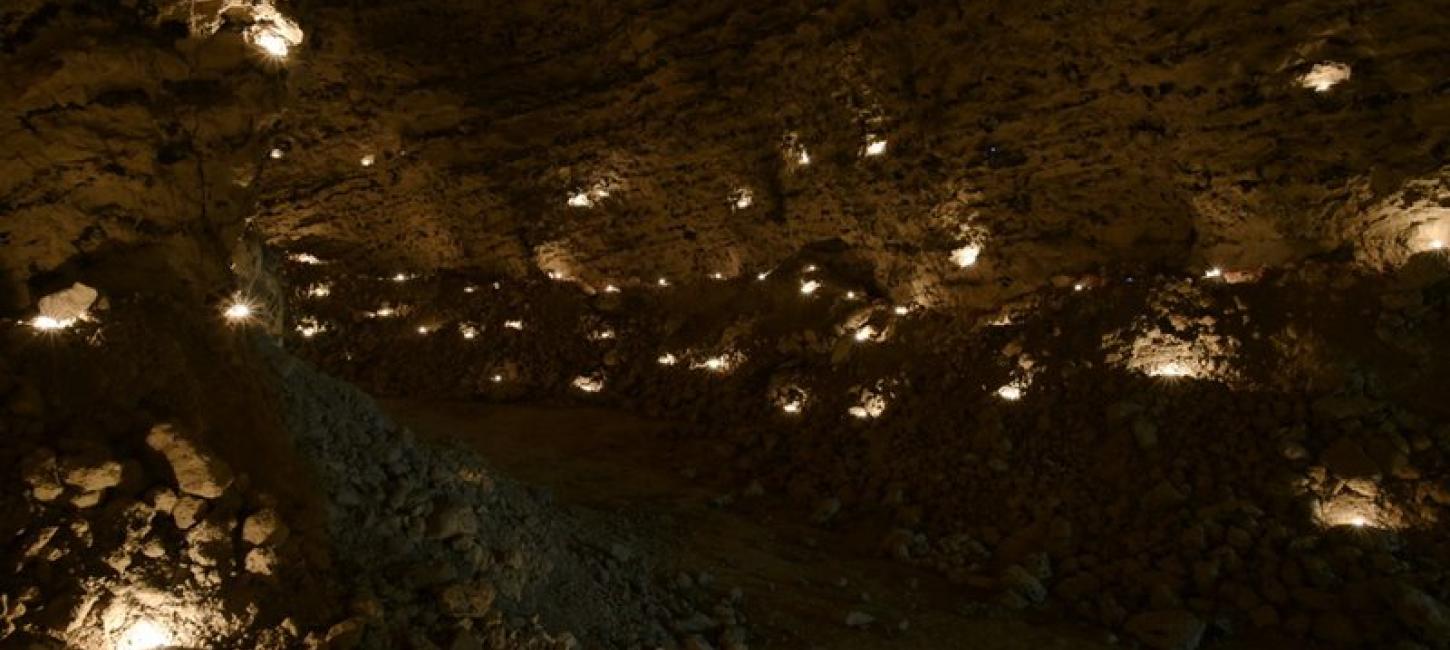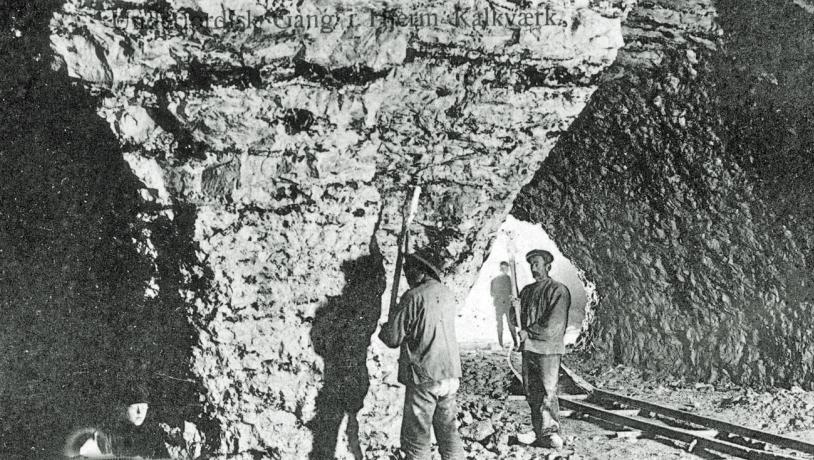
Hjerm Limestone Mine
Hjerm Limestone Mine provides an opportunity to communicate geology in a first rate combination with cultural history, nature and food produce. The mine, that is part of Geosite nr. 44, has become a home for bats in one section, and a store far the maturing of cheese in another.

Photo:Struer Museum
Excavation of Limestone – an Important Job
In the early 1800s chalk was excavated here in an open pit. This provided employment in the summer months but the pit had to close during the winter. About 100 years later an underground mine was developed and work could take place throughout the year. Small tipping trucks were used to transport the chalk to the surface. Hjerm mine was an important workplace in the area until 1957 when it closed. It had become too expensive to separate the flint from the limestone. The mine was purchased by the grandfather of the present owner under the condition that all the mine buildings were removed. Since then the mines have only be used to extract small amounts of limestone and the surface is now used for grazing.

Photo:Henrik Winther Krogh
Bats and Mine Cheese
In 1985, the Danish Nature Agency proposed that the entrance to the mine, which has collapsed, should be reopened so that it could become a home for bats. It was the short-eared bat (Daubenton's bat), the most common of the 17 types of bat in Denmark, that became established in the mine. The bat population in the mine has gradually increased. In 2011 the winter population was 21, whereas in 2015 it had increased to 77 bats. This is a minimum number because of the difficulty of carrying out a reliable count in the mine. The bats, however, became a problem when the possibility of making a cheese store in the mine was investigated by Thise Dairy in the early 1990s. The project was put on hold until 2012. The problem was solved by dividing the mine into two sections, one for the bats and one for the cheese. The bats now have their own entrance to the mine and their increasing numbers bear witness to a successful initiative.

Photo:Søren Raarup
Amber Cheese and Mine Cheese
The cheese store was opened in 2013. Four different kinds of cheese are matured here. One of them, called Thyborøn Ravost (Amber Cheese) is made from milk from cows that graze in the geopark. If this cheese is matured in the mine for 20 weeks it develops a new consistency, taste and history – the so-called grubeost (mine cheese). The humidity and temperature, and maybe also the nature of the air, in the mine are responsible for the taste and consistency. Thise Dairy tells the story of the underground mine in their marketing of the grubeost and the wrapping paper has a picture of the inside the 5 m high mine when it is sold at home and abroad.
Communication
Annual events have been held at and in the mine when about 175 guests have seen the bats fly out from their part of the mine. The guests have been told about the bats and visit the mine. The story of the grubeost has been told in a variety of settings and linked to the Geo-food concept. Local volunteers are in a dialogue with the mine owners to establish a path with information about the surrounding area.
Cooperation With the Aspiring Geopark
The geoparken has provided background material about the geology of the mine for Thise Dairy who in turn have provided tasting samples of, amongst others, the grubeost in connection with the geopark food festival in 2016. The cooperation between the dairy, geopark and local volunteers is expected to continue with communication of information relevant to the history of the mine.